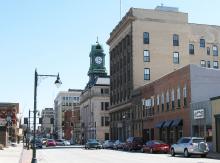Harlingen, Texas Looks to Build Bridge Just North of the Border
While a national debate rages over immigration and the border wall, just 30 miles north of the U.S.-Mexico border, Harlingen city officials are coming together to plan the building of a bridge – across the digital divide deep in the heart of the Rio Grande Valley.
When Harlingen (pop. 75,000) was founded at the turn of the 20th century, it established itself as a prominent commerce and transportation hub – the “Capital of the Rio Grande Valley” at “the crossroads of South Texas.” Over the years, thanks to its fertile delta soil, the cultivation of citrus fruit, grain, and cotton became a major part of the local economy. Today, however, the biggest industry in the second most populous city in Cameron County is healthcare.
As attractive as Harlingen has become to residents and visitors – with its extensive park system and tropical bird-watcher’s paradise (the city happens to be located where two primary avian flyways converge) – one thing the city lacks is adequate access to broadband, which is particularly acute among households with school-aged children.
Pandemic Spurs City into Action
That realization was the impetus behind a recent city commission vote to move forward with a feasibility study to determine how the city might build a broadband network and whether it should rely on fiber, fixed wireless, or a mix of deployment technologies to modernize Harlingen’s telecommunications infrastructure.
“What brought this to our attention was of course the pandemic,” City Manager Gabriel Gonzalez told Valley Central News. “When the school district had to go to virtual learning, we found out that there were students and some families that did not have access to (the) Internet.”



